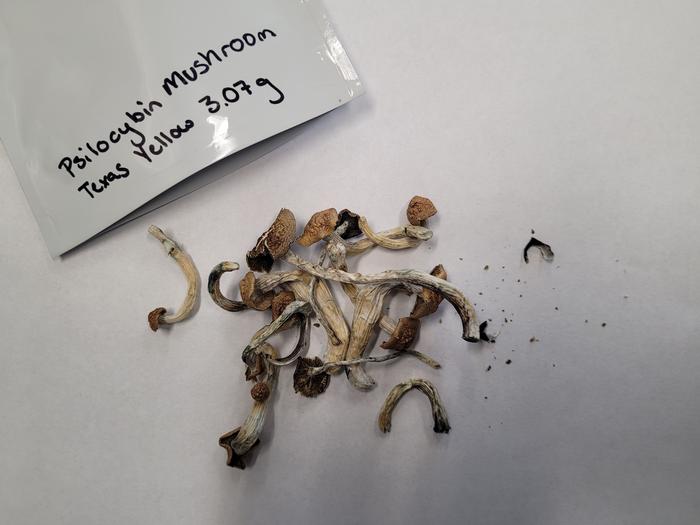New technique measures psilocybin potency of mushrooms
Since the 1970s, the federal government has listed the active ingredients in mushrooms—psilocybin and psilocin—as illegal and having no accepted medical use. Credit: Photo courtesy UT Arlington Since the 1970s, the federal government has listed the active ingredients in mushrooms—psilocybin and psilocin—as illegal and having no accepted medical use. However, in recent years, medical professionals […]

Since the 1970s, the federal government has listed the active ingredients in mushrooms—psilocybin and psilocin—as illegal and having no accepted medical use.

Credit: Photo courtesy UT Arlington
Since the 1970s, the federal government has listed the active ingredients in mushrooms—psilocybin and psilocin—as illegal and having no accepted medical use.
However, in recent years, medical professionals have found that these substances are safe and effective for treating stubborn conditions such as treatment-resistant depression and post-traumatic stress disorder. Some jurisdictions now allow for the medical use of mushrooms, while others are considering permitting or at least decriminalizing their recreational use.
Clinicians now find themselves needing to carefully measure the doses of mushrooms to ensure patients receive the proper amount during treatment. To solve this problem, University of Texas at Arlington researchers have created a method to determine the clinical potency of psilocybin and psilocin in the hallucinogenic mushroom species psilocybe cubensis.
“These legislative changes are expected to facilitate further research and potential clinical applications,” said Kevin Schug, the Shimadzu Distinguished Professor of Analytical Chemistry in the Department of Chemistry and Biochemistry.
Using liquid chromatography with tandem mass spectrometry, Schug and colleagues were able to extract and measure the strength of the mushrooms, according to findings published in the February issue of Analytica Chimica Acta. Co-authors included colleagues at Scottsdale Research Institute in Phoenix; Shimadzu Scientific Instruments in Maryland; and Millipore-Sigma in Round Rock, Texas. The results were then compared with two separate labs to ensure accuracy.
“As medical professionals identify more safe and effective treatments using mushrooms, it will be important to ensure product safety, identify regulatory benchmarks and determine appropriate dosing,” Schug said. “Established and reliable analytical methods like the one we describe will be essential to these efforts to use mushrooms in clinical settings.”
Journal
Analytica Chimica Acta
DOI
10.1016/j.aca.2023.342161
Method of Research
Experimental study
Subject of Research
Not applicable
Article Title
Determination of psilocybin and psilocin content in multiple Psilocybe cubensis mushroom strains using liquid chromatography – tandem mass spectrometry
Article Publication Date
1-Feb-2024
COI Statement
The authors declare the following financial interests/personal relationships which may be considered as potential competing interests:
JF and SK are employees of Shimadzu Scientific Instruments, the manufacturer of the instrumentation used in this study. SB, ABK, and US are employees of Millipore-Sigma. They performed the secondary potency study and provided chemical standards for this research. The authors wish to thank Fritsch Industries-US for the placement and use of the blade mill apparatus used in this research.
What's Your Reaction?

































